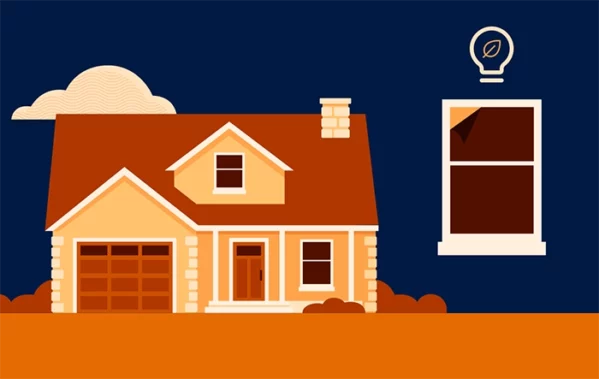Economic and industry news or trends
2021 residential construction forecast: The 3 biggest challenges facing today’s builders
It’s a good time to be in construction.
The industry is booming, and 2021 residential construction forecasts expect growth to continue throughout the rest of the year. Whether you’re a one-man painting contractor or a new home builder with 20 years of experience, that means more projects and more prosperity.
In fact, according to proprietary figures in our 2021 data report, job starts have increased as much as 31% since April 2019. That’s hard to believe when considering where the industry stood just 15 months ago. Projects were halted. Contractors couldn’t meet with their clients. The economy sunk to new lows.
Amid the chaos COVID-19 wrought, builders were forced to fast-track construction project management software and – finding success – ultimately change how they run their businesses forever. Our report zeroes in on how tech now shapes the future of construction. It shows that adoption of digital tools is about more than just remote project management.
Even though it’s a good time for construction, major hurdles still lie ahead. How residential construction companies adequately adopt tech to respond and plan around obstacles will determine the success of their business over the next decade and beyond.
So, what are the top construction problems facing today’s builders? Check it out.
1. Skyrocketing demand
Housing is the hottest commodity of 2021 – and here’s the proof.
According to a report by the U.S. Census Bureau and United States Department of Housing and Urban Development, the sales rate of new single-family houses was up a blazing 41.5% in October 2020 compared to 2019.
More work means more profits … So what’s the problem with skyrocketing demand? It’s simple. Builders just can’t keep up. While it may seem like a good problem to have, it’s a problem, nonetheless. Builders are having to turn clients away, falling behind deadlines and postponing jobs already on deck.
That’s not the type of next-level customer experience any team wants to deliver. The 2021 residential construction forecast doesn’t predict a slowdown anytime soon either. In our data report, we talk with an economist and review industry trends to uncover what’s driving this boom.
Ready to see what construction software
can do for your business?
2. Supply issues
What was once industry news has now gone mainstream national: Lumber and material prices are soaring higher than ever before.
These inflated prices can raise the overall construction costs on a home and reduce the profit margins for contractors. While a client may have agreed to a fixed price on a new build in March, that doesn’t stop the lumber prices from rising tens of thousands of dollars before material is even ordered for that job. Since the contractor can’t renege on the contract, they then eat the costs.
When it comes to supply issues, it’s not just about money either. Builders are also having a harder time quickly accessing supplies due to limited availability and bottlenecks. Mill shutdowns due to COVID-19 only exacerbated this problem.
Our data report takes a deeper look at this challenge and asks a supplier what construction companies can do to most effectively work around it.
3. Labor shortages
Too many houses to build, not enough people to get it done. That’s what this issue boils down to.
It’s not just materials that are in short supply – Labor scarcities are hindering teams’ productivity, too. This is hardly a new challenge to the world of construction either. Ever since the recession in the late 2000s, the industry has had a hard time finding skilled workers to hire and retain. Before construction could recover from the Great Recession, many of those high-quality crew members who were laid off moved on to new careers.
2021 residential construction forecasts show the economic downturn amid COVID-19 had a similar impact. But that’s not the only reason construction is failing to draw an adequate pool of talent. Through analysis of national figures and a discussion with the CEO of Home Builders Institute – a national nonprofit that provides job placement services – our 2021 report takes a closer look at what’s going on. And, more importantly, what can be done about it.
Let Buildertrend’s construction software help you overcome these challenges
The opportunity for companies to more readily and quickly adopt modern tools like construction project management software was evident before the pandemic; however, COVID-19 and these ensuing complications solidified the need. Following the virus’ impact, our 2021 residential construction forecast illustrates how those who embrace digitization will be more successful and resilient.
The industry is undergoing a tech transformation. Our report makes it very clear – it’s time for teams to get on board or get left behind. By analyzing our proprietary data and hearing success stories from real customers, software’s impact on residential construction project management is made evident.
Download your copy of our 2021 data report today.
We’ll uncover why tech is the future – and how it can be used to overcome these upcoming challenges.
Have more questions? Our Buildertrend team is ready to help! Contact us today to get started.

Bathroom design trends in 2024
With life being so fast-paced, bathroom designs are embracing the concept of personal sanctuaries. Here are the latest bathroom design trends for 2024.

How window tinting can increase energy efficiency in new builds
Here are five reasons why home window tinting is becoming an increasingly popular choice for and energy-conscious enhancement on new builds.

The 2024 housing market outlook
In this 2024 construction industry update, Buildertrend’s in-house expert shares insight into the lock-in effect, interest rates and the labor shortage.
Want to contribute to our blog?
We believe in building a community for construction – sharing is a big part of that. If you have industry expertise or a story to tell, your voice can reach thousands here.

